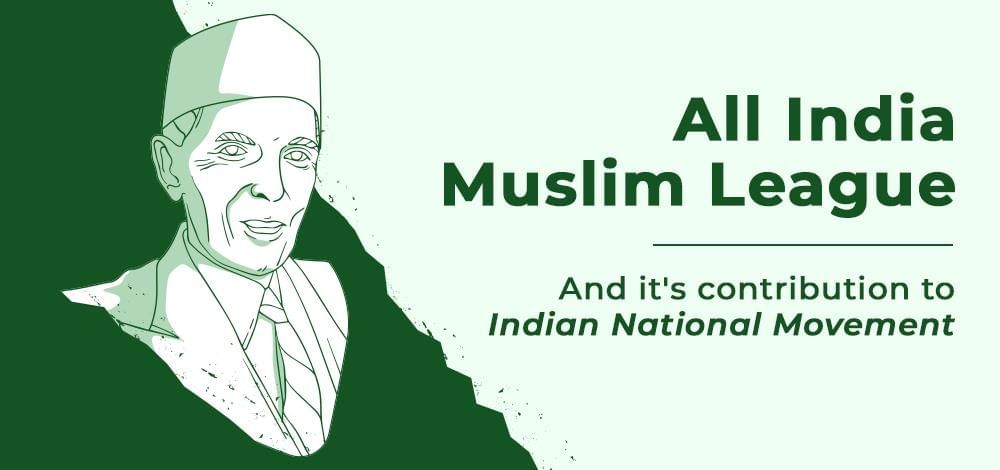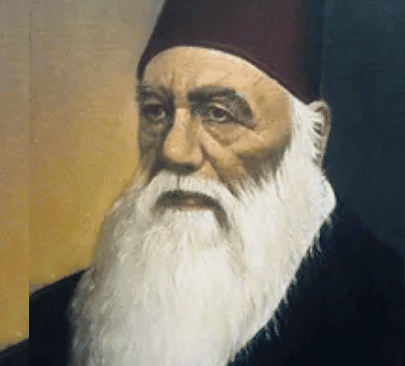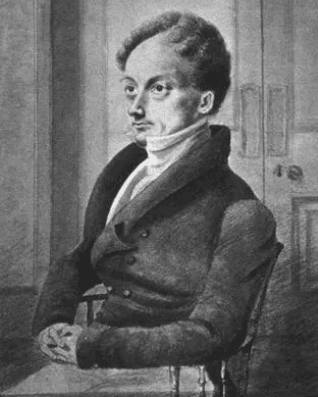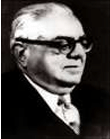Class 10 Exam > Class 10 Notes > History and Civics Class 10 ICSE > Revision Notes: The Muslim League
Revision Notes: The Muslim League | History and Civics Class 10 ICSE PDF Download
The Indian National Congress and the Muslim League

- The relationship between Hindus and Muslims in India had been harmonious for centuries, with both communities respecting each other's cultures and traditions. They even joined forces during the revolt of 1857 against British rule. However, the British sought to disrupt this unity through their 'Divide and Rule' policy, aiming to curb the growing nationalist sentiment in the country.
- After the revolt, the British portrayed it as a Hindu attempt to establish dominance, which prompted Muslims to consider the need for their own political representation. This manipulation by the British played a significant role in the formation of the Muslim League in India.
Factors Leading to the Formation of the Muslim League
Loss of Sovereignty by Muslim Rulers
The British established their authority in India by overthrowing the Mughal rulers, which made the Muslims resentful towards the British. Initially, the British discriminated against Muslims, blaming them for the 1857 uprising and favouring Hindus. However, around 1870, the British shifted their approach towards Muslims in an attempt to curb the rising nationalism in India. They began to encourage separatist and communal tendencies among different communities.
Policy of Divide and Rule
The British implemented a divide-and-rule policy to foster separatist tendencies in India. This policy involved various measures:
- In 1871, the British made Urdu the medium of instruction for Muslims in primary and secondary schools and provided government aid to Muslim-run educational institutions.
- They sowed seeds of religious hatred by portraying Muslim rulers as plunderers to Hindus and Hindu rulers as cruel to Muslims.
- The British justified the partition of Bengal by assuring Muslims that Hindus would not economically dominate them in the Muslim-majority province of East Bengal.
- Hindus, Muslims, and Sikhs were treated as separate communities rather than one nation.
- Efforts were made to spread communal hatred through press, posters, and literature.
Educational and Economic Disparities Among Muslims
The Muslim community in India faced significant educational and economic challenges due to various factors:
- Upper-Class Resistance: The upper-class Muslims, including zamindars and aristocrats, were opposed to British rule and Western education. This resistance hindered progress.
- British Discrimination: After the 1857 uprising, the British government discriminated against Muslims, blaming them for the revolt. This led to their exclusion from civil and military service opportunities.
- Lack of Industrial Involvement: Muslims were not involved in the development of organized industry, which further contributed to their economic backwardness.
- Conservative Attitudes: Many Muslims held conservative views and were reluctant to embrace Western education. In contrast, Hindus were more open to modern education, gaining advantages in civil and government services.
Contributions of Sir Sayyid Ahmad Khan

Sir Sayyid Ahmad Khan was a prominent educator and social reformer. Initially, he believed in the unity of Hindus and Muslims as one nation. However, influenced by British policies, he later emphasized the differences between the two communities.
- Founding of Educational Institutions: In 1875, he established the Mohammedan Anglo-Oriental College in Aligarh, which later became Aligarh Muslim University. This institution aimed to promote education among Muslims.
- Political Involvement: In 1888, Sir Sayyid founded the United Indian Patriotic Association to oppose the Indian National Congress. He feared that Hindus, as the majority, would dominate Muslims after British withdrawal.
- Advocacy for British Rule: Sir Sayyid believed that continued British rule would benefit Muslims by bringing education and prosperity.
Erroneous Interpretation of History
The way history was presented during the British rule also played a role in the rise of communalism. British historians like James Mill divided Indian history into Hindu, Muslim, and British periods. This division created a sense of communalism among the people.

- James Mill's division portrayed the ancient period as the Hindu period and the medieval period as the Muslim period, ignoring the idea of a composite Indian history.
- This deliberate division aimed to create a rift between the Hindu and Muslim communities.
- Communal historians emphasized a decline in Indian culture during the medieval period, overlooking the scientific, technological, and cultural advancements made during that time.
- James Mill's division of Indian history into Hindu, Muslim, and British periods contributed to communalism.
Rise of Assertive Nationalism
The policies and speeches of certain assertive nationalists annoyed the Muslims. For example, the propagation of Shivaji and Ganpati festivals by Tilak and Aurobindo Ghosh did not appeal to the Muslims.
Economic Backwardness of India
The economic backwardness of the country contributed to the rise of communalism in India. As jobs were few, people demanded reservations in services on the basis of caste, class and creed.
- This demand for reservations was used by the British to adopt the policy of divide and rule.
- The unemployed youth however failed to realise that the British policies were actually responsible for the economic backwardness of the country.
Events Leading to the Formation of the Muslim League
- The Hindi Urdu Controversy
In the United Provinces, all petitions were submitted in Urdu, which was the court language. However, in 1900, the government mandated that all petitions be submitted in Hindi, and court summons and announcements be made in both Hindi and Urdu. This change was met with resentment by the Muslim community. - Foundation of the Mohammedan Anglo-Oriental Association in 1893
The British perceived the growing influence of the Congress as a threat and sought to counter it by promoting the formation of the Mohammedan Anglo-Oriental Defence Association in 1893. The primary objective of this organization was to curb Muslim participation in the Congress and foster loyalty among Muslims towards the British. - Aligarh Politics
The Aligarh Movement, led by Nawab Mohsin-ul-Mulk after the death of Sir Sayyid Ahmad Khan, aimed to instill a sense of loyalty among Muslims towards the British. However, the movement members expressed strong resentment when Hindi and Urdu were accorded equal status in government courts. This led to a growing sentiment among Muslims for self-organization. - Partition of Bengal
The British decision to partition Bengal into East Bengal (a Muslim majority region) and West Bengal (a Hindu majority region) was an attempt to create a divide between the two communities. The British were supported by Muslims in this decision, as they promised that the new province of East Bengal would be predominantly Muslim. - Muslim Delegation to Viceroy Minto
On October 1, 1906, a Muslim delegation led by Agha Khan met with Viceroy Minto to present their demands. The key requests included:- Representation of Muslims in elected bodies based on political significance rather than numerical strength.
- Establishment of separate electorate constituencies for Muslims in the Provincial Council and the Imperial Legislative Assemblies.
- Preference for Muslims when nominating members to the Viceroy’s Council.
- Preservation of seats for Muslims in State Services.
- Increased state aid for new Muslim universities.
Formation of the Muslim League
The success of the Muslim deputation inspired the formation of a separate political organization for Muslims. Nawab Salimullah of Dacca initiated this effort when prominent Muslim figures gathered in Dacca in 1906. The proposal to create an All India Muslim League was accepted, and the organization was established on December 30, 1906, with Nawab Salimullah as President and Agha Khan as the permanent President.

Agha Khan, a founding member of the Muslim League, played a crucial role in its formation.
Aims and Objectives of the Muslim League
- Loyalty to the British: The Muslim League aimed to foster a sense of loyalty towards the British among Muslims in India.
- Political Rights and Representation: The League sought to protect and advance the political rights and interests of Muslims, ensuring their needs and aspirations were represented to the government.
- Preventing Hostility: Another objective was to prevent the emergence of hostility between Muslims in India and other communities.
Impact of the League on the Indian National Movement
- British Support: The British welcomed the formation of the Muslim League, believing it would counter the influence of the Congress.
- Initial Non-Participation: Initially, the League did not participate in the national movement. Its focus was on seeking greater representation for Muslims in various services, often directing its policies more against the Congress than the British.
- Separate Electorates: The government acceded to the League's demands for separate electorates for Muslims in the Morley-Minto reforms of 1909.
- Shift in Muslim Attitude: From 1910 onwards, there was a shift in the attitude of Muslims, becoming friendlier towards the Congress. This change was influenced by several factors:
- British Hostility Towards Turkey: The British hostility towards Turkey during the Turco-Italian Wars (1911-12) and the Balkan Wars (1912-13) alienated Muslims from the British.
- Annulment of Bengal Partition: The annulment of the Partition of Bengal was perceived as detrimental to the economic interests of Muslims.
- Discontent with British Loyalty: The younger generation of Muslims grew discontent with the older generation's loyalty to the British.
- Influence of Deoband School: Young Muslims inspired by studies at the Deoband School, such as Maulana Abul Kalam Azad, Hakim Ajmal Khan, and Habibur Rahman, were eager to engage in the national movement.
- Khilafat Movement: When the British were at war with Ottoman Turkey, Indian Muslims launched the Khilafat Movement against the British.
- Lucknow Pact: The Congress and the Muslim League signed the Lucknow Pact in 1916, marking a significant collaboration.
- Continued Communal Policies: Despite the collaboration, the League's communal policies persisted.
- Demand for Pakistan: In 1930, the League demanded the creation of a separate state of Pakistan.
- Two-Nation Theory: In 1940, Jinnah articulated the two-nation theory, asserting that the Congress and the League represented two different nations.
- Partition of British India: Responding to the demands and communal unrest stirred by the Muslim League, British India was partitioned into India and Pakistan in 1947.
The document Revision Notes: The Muslim League | History and Civics Class 10 ICSE is a part of the Class 10 Course History and Civics Class 10 ICSE.
All you need of Class 10 at this link: Class 10
|
28 videos|103 docs|27 tests
|
FAQs on Revision Notes: The Muslim League - History and Civics Class 10 ICSE
| 1. What were the main factors that led to the formation of the Muslim League? |  |
Ans. The main factors that led to the formation of the Muslim League included the growing sense of political consciousness among Muslims, fear of marginalization in a predominantly Hindu political landscape, and the desire to safeguard the rights and interests of Muslims in India. Additionally, the British policy of divide and rule further exacerbated communal tensions, prompting Muslim leaders to establish an organization that would represent their political aspirations.
| 2. What were the key events that preceded the formation of the Muslim League? |  |
Ans. Key events leading to the formation of the Muslim League included the All India Muslim Conference held in 1906, where Muslim leaders articulated their grievances and demands. The British government's policies, such as the introduction of separate electorates for Muslims in the Morley-Minto Reforms of 1909, also played a significant role. These events created a sense of urgency among Muslim leaders to establish a formal political party to advocate for their community's rights.
| 3. What were the primary aims and objectives of the Muslim League? |  |
Ans. The primary aims and objectives of the Muslim League included promoting the political rights and interests of Muslims in India, advocating for separate electorates, and striving for self-governance. The League sought to ensure that Muslims had a distinct political voice and representation in the legislative councils, as well as to address issues affecting the Muslim community, such as education, social reform, and economic development.
| 4. How did the Muslim League impact the Indian National Movement? |  |
Ans. The Muslim League significantly impacted the Indian National Movement by introducing a communal dimension to the struggle for independence. Its demand for separate electorates and later the two-nation theory led to increased polarization between Hindus and Muslims. This division influenced the course of the freedom movement, resulting in the eventual partition of India in 1947, which was a direct consequence of the League's political agenda and its insistence on a separate nation for Muslims.
| 5. How did the relationship between the Indian National Congress and the Muslim League evolve over time? |  |
Ans. The relationship between the Indian National Congress and the Muslim League evolved from initial cooperation to increasing tension and rivalry. Initially, both parties worked together to oppose British rule, but differences emerged over issues like representation and communal interests. The Congress's emphasis on a unified national identity clashed with the League's demand for a separate Muslim identity, leading to a breakdown in relations and contributing to the eventual partition of India.
Related Searches
















